10 steps to freelance success
Anna Richardson Taylor gathers the wisdom of experience from those who have made the leap into freelance life.
06. Set your rates
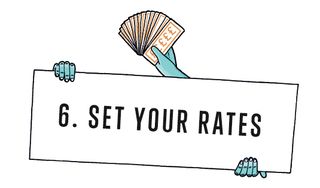
Pricing is one of the most tricky aspects of freelancing. "At the beginning you will probably either charge too much or, more likely, too little," says freelance illustrator Dale Edwin Murray. "A lot of times clients come with a set budget for a project, so barring negotiation, the question of fees is taken out of your hands. As you work on more and more of these jobs you begin to get a sense of what the going rate is and can set your own fees accordingly."
Asking friends in similar fields what they charge is another option, and for illustrators, the AOI provides on-tap advice on license agreement, license fees and standard fees.
If you 're considering whether you should work for free to bolster your portfolio, you find yourself in contentious waters. "One of the rules of thumb I use is, if the person commissioning you is being paid, then so should you," says Rod Hunt.
Protect the licence fees first and foremost. "It's not even about the money," says illustrator Lizzie Mary Cullen. "It's about the idea. They are renting your copyright, so they can 't have it for free – that's crazy."
"I know how long a job takes me; but I also know how long I spent honing my craft and how much I spent on tuition fees, how much I spent on my pens, and all these things come together. I think that I do a better job when I know I am being valued, and people appreciate it as well when they're paying for better quality."
07. Know when to say no
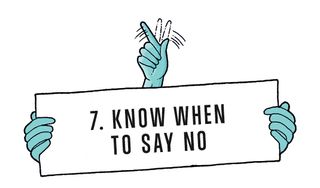
If you feel you might have to compromise on quality by taking on too much work, it's time to turn down a job.
In addition, it's important to have an idea of the type of work you want to do, and try to stick to it when possible, freelance designer David Bonas points out. This might mean turning down certain projects in favour of building the right portfolio in the long run.
Many freelancers also mention ethical considerations. Ben O'Brien, for example, wouldn't work for a gun company, and Rod Hunt warns of clients that might ask you to do something unethical such as copying another person's work or style. "I would also turn down a job if the client is demanding assignment of copyright or the fee is unrealistically low and does not reflect the actual worth of the job," he adds.
Beware, too, of the committee, says designer Andrew Warwick. "Any brief where they mention they have an experienced committee to review the work, is a total 'avoid' at all costs," he says. "You're going to have to deal with a load of nonsense. Also, any kind of client who says 'I know what I like when I see it' – that usually means they're unwilling to write a proper brief, and expect you to have daily ideas to throw at them. Unless they have an incredibly huge budget, avoid."
08. Sidestep the pitfalls
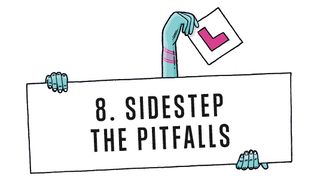
The biggest danger, according to many freelance veterans, is selling yourself too cheaply. It's important to understand early on that the fee you receive also needs to cover your business expenses and tax, and you need to price your services accordingly. What is the use of slaving away for weeks, if the fee barely covers your rent – let alone your notebooks and printer ink?
Also, don't mistake a large paycheck for a lottery win. Fees need to go a long way. Just because you receive a five-figure sum, doesn't mean you're "some sort of premiership footballer," says designer Andrew Warwick, who remembers that feeling well. "You realise after a while it might be a couple of months before you get another one."
You may be the best designer in the world, but if no one sees your work, you won't get commissioned
Freelancers have to expect to work hard to be seen by as many people as possible – and invest the time and resources in promoting their work and explore all possible markets. "You may be the best designer/illustrator in the world, but if no one sees your work, you won't get commissioned," says illustrator Rod Hunt. "I invest around 10 per cent of my turnover a year in marketing."
However, the most fatal pitfall is not realising you might not be suited to freelance life in the first place. "Do some serious soul-searching as to whether it's a career route that suits your personality," says Dale Edwin Murray.
09. Avoid burnout
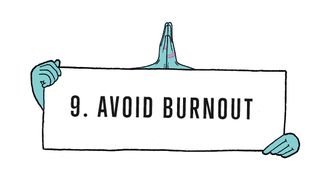
Taking a break seems to be one of the hardest things to do when you're a freelancer. As soon as holiday is unpaid, notions of work-life balance go out of the window. Not being able to say "no" means work can encroach on evenings and weekends, and before you know it you have been working five years straight without a break. But beware – freelancers who get worn out can lose months through illness.
"Take at least one day off at the weekend, and never work seven days a week unless absolutely necessary and then only for short periods," advises illustrator Rod Hunt. "It's a law of diminishing returns, you become less and less productive."
Other advice includes marking time in the diary to pursue activities aside from work – a walk in the park, a visit to a gallery or even around the shops can help you see a problem in a new light – and if you find yourself with a random weekday free, says Molly Cockcroft, "don't panic, treat it like a day off, because I bet you will be working all of the following weekend."
Personal projects allow you the space to explore different areas which will help you keep fresh and avoid feeling burnt out, according to illustrator Dale Edwin Murray. "Something from these experiments always seems to seep its way into client work, so they are mutually beneficial."
10. Find your ideal workspace
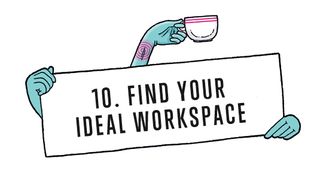
Whether it's the kitchen table, the back bedroom, a shared studio space or a rented office, a workspace preference usually depends on the individual and their disposition. Is a day without human interaction anathema? Can you effectively separate home from work?
Sharing a space in a creative work environment is a popular option. "It's a great way to expand your network of contacts and have easy access to advice and feedback from people in the same line of work," says David Bonas. "Working away from home helps me manage my time better. I would definitely recommend it to start off. If the business grows you can always consider moving to your own studio space."
Having that studio space allows you to shut the door on your work and go home at night. You are also likely to be more productive. "I don't think a studio is like a normal workplace where you 're looking at your watch to get out of there," says illustrator Serge Seidlitz. "You should feel comfortable and like hanging out."
However, remember that your workspace is very personal, and for many, the kitchen table will always suffice. As freelance illustrator Lizzie Mary Cullen says: "If you want to draw, you just draw – worrying about tables and chairs doesn't matter."
Words: Anna Richardson Taylor
Illustration: Toby Triumph
Read the full digital article inside Computer Arts 236: the freelance issue – found inside the Computer Arts app. It's packed with advice for supercharging your freelance career, and comes with a free 115-page supplement, The Freelance Handbook.
Like this? Try these...
- The secrets to better client relationships
- 5 classic mistakes to avoid when approaching an agent
- The designer's guide to working from home

Thank you for reading 5 articles this month* Join now for unlimited access
Enjoy your first month for just £1 / $1 / €1
*Read 5 free articles per month without a subscription

Join now for unlimited access
Try first month for just £1 / $1 / €1
Get the Creative Bloq Newsletter
Daily design news, reviews, how-tos and more, as picked by the editors.
The Creative Bloq team is made up of a group of design fans, and has changed and evolved since Creative Bloq began back in 2012. The current website team consists of eight full-time members of staff: Editor Georgia Coggan, Deputy Editor Rosie Hilder, Ecommerce Editor Beren Neale, Senior News Editor Daniel Piper, Editor, Digital Art and 3D Ian Dean, Tech Reviews Editor Erlingur Einarsson and Ecommerce Writer Beth Nicholls and Staff Writer Natalie Fear, as well as a roster of freelancers from around the world. The 3D World and ImagineFX magazine teams also pitch in, ensuring that content from 3D World and ImagineFX is represented on Creative Bloq.
